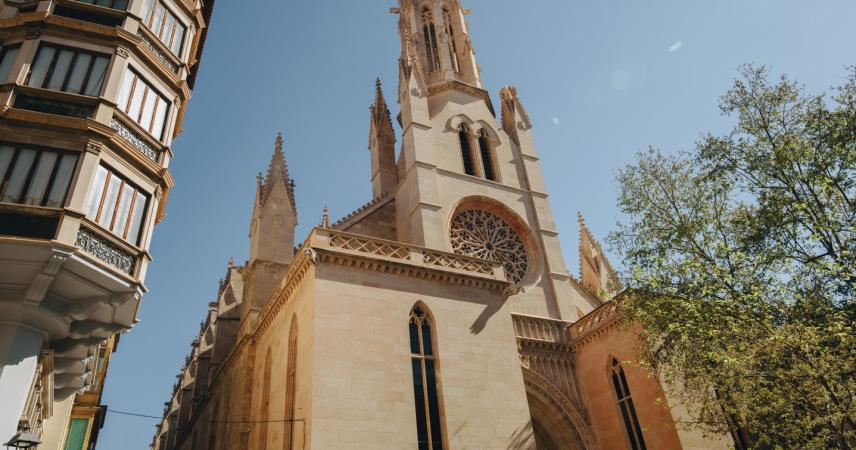This Catholic church, declared a Site of Cultural Interest since 1931, is named after the patron saint of Barcelona, much venerated by the Christian conquerors from Catalonia. The parish church of Santa Eulalia is located just a stone's throw from the iconic Plaza de Cort, where Palma's imposing City Hall is located.
From the outside, the Gothic side walls of the church contrast with the main façade and the bell tower, which were remodeled in the neo-Gothic style between 1894 and 1903 following the earthquake that struck Mallorca in 1851.
The chapels of this parish house examples of the medieval Mallorcan style, such as the panels of Salvatore Mundi (Francesc Comes), the Dormition of the Virgin, and the altarpieces of Saint Lucy, Saint Barbara, and Saint Blaise. There are also numerous Baroque examples, such as the altarpieces of Saint Bartholomew and the Pietà, as well as the altarpiece of Saint Eloy.
The monumentality of this temple is due to the fact that it was the largest parish church in Palma in the 13th century. Furthermore, this church has historical significance, as it was here that James II was crowned King of Majorca.
The small, intimate square that houses the church has terraces where you can stop and taste some typical local produce, whether it's an ensaimada (a typical Spanish sandwich) or a camaiot (cold cut) 'llonguet' (a sandwich bread).

